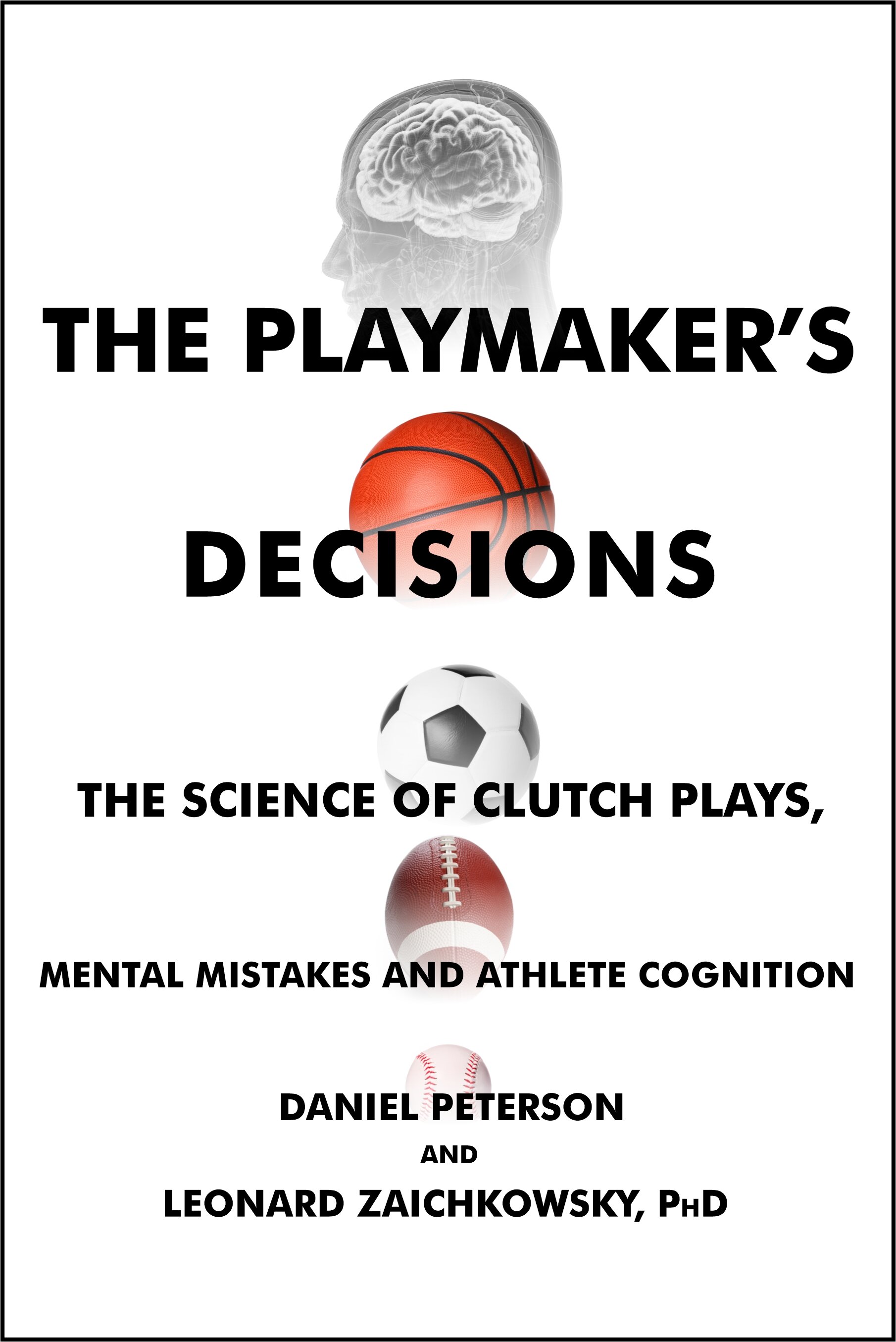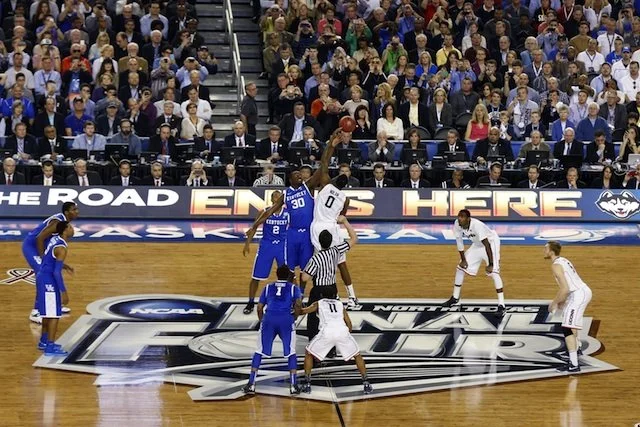Do Young Athletes Need Practice Or Genetics? A Conversation With Peter Vint
/Recently, while I was taking up my normal Saturday position on a youth soccer game sideline, I overheard a conversation between two parents as they watched the players warm-up. “I just love watching James play soccer. He’s just one of those natural talents.” “I agree. Even though his parents never played growing up, he just seems to have inherited all the right genes to be a top player.”
It’s a common belief among parents and some coaches that kids either have “it” or they don’t. Of course, some skills can be gained from practice, but the talent theory of player development and team selection seems to favor the opinion that athletic skill is “hard-wired”, unable to progress much beyond the natural limit.
Now, several books are out to prove this theory incorrect, with titles such as “The Talent Code: Greatness Isn’t Born, Its Grown”, “Talent Is Overrated”, and “The Genius in All of Us: Why Everything You've Been Told About Genetics, Talent, and IQ Is Wrong.” The common thread through all of the research studies quoted by the authors is the mantra that practice makes perfect. More specifically, about 10,000 hours of highly structured practice is required to reach elite performance levels.
Is athletic success that black or white? Instead, is there a combination of talent and tenacity that is required to reach the top? I put these questions to an expert who spends most of his waking hours trying to find the answer.
 |
| Peter Vint |
His team is responsible for conceptualizing, developing, and implementing successful and sustainable applied sport science programs with a focus on maximizing athlete development, performance, and longevity.
Recently, Peter was kind enough to endure my endless questions on this topic. Here is a synopsis of our conversation:
Dan Peterson: Peter, what makes a great athlete? Is it raw, inherited talent or years of dedicated practice?
Peter Vint: The question of what makes an athlete great is very complex. The extent to which performance is influenced by genetic predisposition or the expression of these traits through extensive hard work and practice is not at all a black and white issue. Human performance is always nuanced and complicated and multivariate. That said, if forced to give an opinion, I would absolutely fall on the nurture/deliberate practice side of this issue than on the nature/"giftedness" side.
But, whether you subscribe to the narratives in The Talent Code, Talent is Overrated, Bounce, Outliers, Genius in All of Us, etc. or not, a great number of the cited references in these books are solid and substantial. Be sure to review the footnotes and bibliographies.
But, whether you subscribe to the narratives in The Talent Code, Talent is Overrated, Bounce, Outliers, Genius in All of Us, etc. or not, a great number of the cited references in these books are solid and substantial. Be sure to review the footnotes and bibliographies.
DP: Most of the books you reference go back to the research of K. Anders Ericsson of Florida State University, known as the “expert on experts.” His theory states that an individual needs at least 10 years and 10,000 hours of deliberate practice in their chosen sport or skill to become world-class. Some authors take this literally and suggest that is all that is needed. Do you agree?
PV: First, it’s important to recognize that the 10 year/10,000 hr rule is more of a general guideline than an absolute standard. Ericsson is very clear on this but perhaps owing to the simplicity of the message, it is quite possible that the general public has interpreted this in a more absolute sense. That said, I do think that Ericsson’s work is being somewhat oversimplified in that he, and others in this field, realize that there are obvious and necessary interactions between genetic predisposition, "deliberate practice", and even "opportunity" or circumstance. To what extent this has actually happened I cannot say. I can point to several examples in the popular media where authors have captured these complexities nicely (e.g., Malcolm Gladwell’s Outliers, Matthew Syed’s Bounce, and David Shenk’s The Genius in All of Us).
It is likely that athletes like Lebron James, Shaquille O'Neill, and Kevin Durant would never have become an Olympic gymnast or Triple Crown winning jockey - regardless of how hard or how deeply they practiced. But, how many athletes with a relatively similar genetic makeup to guys like Lebron, Shaq, and KD have NOT become superstars? A lot. And, to flip the coin, how many superstars arise from relative obscurity or against all odds? A lot. Even when we do become aware of "young geniuses", closer inspection often yields interested and engaged and supportive parents and an environment that encourages and supports "effort" - and not "the gift" (see Carol Dweck’s “Mindset” for an exceptional treatment of this topic). Michael Jordan, Wayne Gretzky, and Tiger Woods come to mind.
My feeling in reading a broad body of literature related to human performance is that, in general (and there are notable exceptions to this), there is likely a minimal set of physical traits or genetic makeup which facilitates achievement to a particular level of success. Note that this may not be an absolute necessity (think, Mugsy Bogues). However, I believe the great differentiator in human performance is not genetic predisposition. but rather the expression of the gene pool which is itself now clearly related to the extent to which the individual accumulates hours of "deliberate practice".
I see another common misinterpretation in the 10 year/10,000 hr rule. The literature is clear in this but the general public’s understanding often misses the distinction in that this is not simply accumulated hours of practice, but accumulated hours of DELIBERATE practice. Dan Coyle's introduction in "The Talent Code", "The girl who did a month's practice in 6-minutes" is, in my opinion, perhaps the most insightful example of this distinction I’ve ever read.
DP: So, do genetics play any role in sports success?
PV: My short answer is yes, to varying extents, they do. But, as before, I do not believe that genetics are necessarily an absolute limiter of exceptional performances. "Skill" is developed, not from basic physical or cognitive attributes or from some magical quality ("a gift"), but from sustained, effortful, and effective practice complemented with meaningful, well-timed, and actionable feedback.
Skill itself is a complex process and almost always involves many different types or classes of skill: motor skill (the physical actions involved with "doing something"), mental skills, and perceptual skills. The extent to which these various types of skills are called into play will depend on the overall task being executed.
For example, a pilot controlling an automated aircraft may need only nominal motor skill to press a button, but will require substantial mental and perceptual skill to understand what happens when the automation switches from one mode to another. On the other hand, a basketball player will require extensive motor skill in executing a drive to the basket but will, though to a lesser extent, also involve perceptual and mental skills. Good examples of the world's best players in sport (especially team sports) seem to have exceptionally well developed perceptual skills which allow them to "see the field" better than others and "know where players will be before they even arrive".
So, physical ability (height, strength, speed, coordination) and the specific genetic code which tends to manifest it, may or may not play a significant role in the execution of the skill, depending on what the skill actually requires. The same is true of genetic predisposition, which may either enhance or impair the development of mental and perceptual skill.
It is likely that athletes like Lebron James, Shaquille O'Neill, and Kevin Durant would never have become an Olympic gymnast or Triple Crown winning jockey - regardless of how hard or how deeply they practiced. But, how many athletes with a relatively similar genetic makeup to guys like Lebron, Shaq, and KD have NOT become superstars? A lot. And, to flip the coin, how many superstars arise from relative obscurity or against all odds? A lot. Even when we do become aware of "young geniuses", closer inspection often yields interested and engaged and supportive parents and an environment that encourages and supports "effort" - and not "the gift" (see Carol Dweck’s “Mindset” for an exceptional treatment of this topic). Michael Jordan, Wayne Gretzky, and Tiger Woods come to mind.
My feeling in reading a broad body of literature related to human performance is that, in general (and there are notable exceptions to this), there is likely a minimal set of physical traits or genetic makeup which facilitates achievement to a particular level of success. Note that this may not be an absolute necessity (think, Mugsy Bogues). However, I believe the great differentiator in human performance is not genetic predisposition. but rather the expression of the gene pool which is itself now clearly related to the extent to which the individual accumulates hours of "deliberate practice".
I see another common misinterpretation in the 10 year/10,000 hr rule. The literature is clear in this but the general public’s understanding often misses the distinction in that this is not simply accumulated hours of practice, but accumulated hours of DELIBERATE practice. Dan Coyle's introduction in "The Talent Code", "The girl who did a month's practice in 6-minutes" is, in my opinion, perhaps the most insightful example of this distinction I’ve ever read.
DP: So, do genetics play any role in sports success?
PV: My short answer is yes, to varying extents, they do. But, as before, I do not believe that genetics are necessarily an absolute limiter of exceptional performances. "Skill" is developed, not from basic physical or cognitive attributes or from some magical quality ("a gift"), but from sustained, effortful, and effective practice complemented with meaningful, well-timed, and actionable feedback.
Skill itself is a complex process and almost always involves many different types or classes of skill: motor skill (the physical actions involved with "doing something"), mental skills, and perceptual skills. The extent to which these various types of skills are called into play will depend on the overall task being executed.
For example, a pilot controlling an automated aircraft may need only nominal motor skill to press a button, but will require substantial mental and perceptual skill to understand what happens when the automation switches from one mode to another. On the other hand, a basketball player will require extensive motor skill in executing a drive to the basket but will, though to a lesser extent, also involve perceptual and mental skills. Good examples of the world's best players in sport (especially team sports) seem to have exceptionally well developed perceptual skills which allow them to "see the field" better than others and "know where players will be before they even arrive".
So, physical ability (height, strength, speed, coordination) and the specific genetic code which tends to manifest it, may or may not play a significant role in the execution of the skill, depending on what the skill actually requires. The same is true of genetic predisposition, which may either enhance or impair the development of mental and perceptual skill.
In the context of sport, well-matched physical abilities are often very advantageous. That said, those same physical attributes, without an ability to properly coordinate body actions or to properly execute the action at the appropriate time or to adequately control them under pressure or in unusual circumstances, more often than not, will lead to poorer performances. Pointing again to examples like Wayne Gretzky or Magic Johnson, these were not the biggest, fastest, or strongest athletes in their sport. Their exceptional performances came from exceptional development of all facets of the skills they were required to execute in the environments they worked in. This did not happen magically but through hard work, vast and varied experiences, and a level of physical ability that allowed them to execute. To quote Wayne Gretzky, “I wasn't naturally gifted in terms of size and speed; everything I did in hockey I worked for. ..The highest compliment that you can pay me is to say that I work hard every day…”
DP: Peter, thank you very much for your insight.
DP: Peter, thank you very much for your insight.
















































